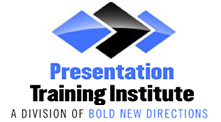Long gone are the days of scribbling notes all over the outline you printed out and brought as a reference. No more passing out pamphlets and photographs to illustrate your points. These days, technology is a must-have accessory to just about any presentation. In fact, Microsoft PowerPoint (the leading presentation software) has been installed on over a billion computers worldwide. But it doesn’t stop there! Presentation software is just one of the many ways in which technology has changed the way speakers present their material. Technology is constantly changing and evolving, and so too is the art of public speaking. Let’s take a look at a few of the ways in which technology has impacted the way speakers present.
Presentation Tools
Technology has made it possible for presenters to showcase information in a more interesting way that makes the presentation easier to follow and more memorable for audiences. Microsoft PowerPoint was the first major presentation tool that allowed speakers to create unique designs and templates to present their content. In recent years, new presentation tools such as Prezi, Google Slides, Visme, Canva, and many more have become readily available and allow presenters to create livelier, colorful, animated, and interactive presentations.
Presentations Have Become More Interactive
Sales and corporate presentations have become more interesting and interactive thanks to technology, Technology has made it possible for presenters to draw, write, and add content in real time during the presentation. Likewise, the audience can participate and interact with the presentation by making edits, comments, and asking questions.
Reach a Wider Audience
There used to be a time when presentations were limited by physical and geographic locations but thanks to technology, speakers can now present information to audiences anywhere in the world. Presenters can live-stream their presentation or conduct meetings through video conferencing so audience members can join the presentation from a remote location.
Social Media
Social media platforms like Facebook and Twitter have dramatically changed the way presentations are held. Presenters can use these platforms to advertise their upcoming speaking engagement and gather information from audiences prior to the presentation. Furthermore, these platforms have made it possible for presenters to interact with audiences during the presentation. For example, hashtags can be used to encourage audiences to participate through live surveys, constructive feedback, or chatting through live forums.
3D Models
Another new and engaging way of presenting materials is by embedding 3D models. These models have become increasingly popular thanks to accessible 3D programs such as PowerPoint 3D. This program allows presenters to present actual 3D models of products and the image can be rotated, spun, and zoomed to show it from any perspective.
Slideshow Devices
Great presentations aren’t just about the information itself but also how it is presented. There are a number of handheld devices that give presenters complete control over the slideshow. With these devices, presenters can control transitions between slides, digital pointers, and zooming on slides with the touch of a button. Thus, they can move around the room and control the slideshow without being chained to a lectern.
Phone Conferencing
Not all meetings and presentations can be held in person and phone conferencing technology has made it possible for audience members all over the world to connect in one phone meeting. Audience members can listen as contribute feedback as presenters share information with a group.
